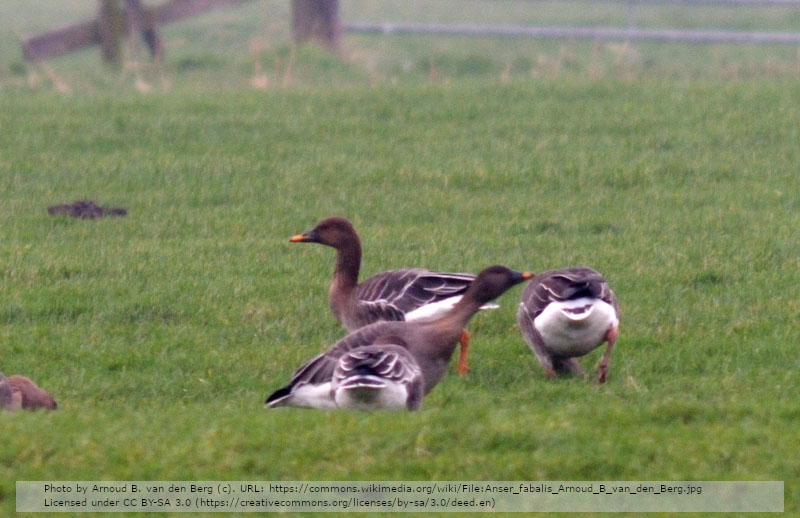Komplexet av rast- och betesmarker för taigasädgås Anser f. fabalis i Umeälvens deltaområde, Sverige – födosöksmönster i jämförelse med grågås Anser anser, sångsvan Cygnus cygnus och trana Grus grus
DOI:
https://doi.org/10.34080/os.v15.22742Nyckelord:
Anatidae, rastplatser, antropogena effekter, lantbruk, födosöksekologiAbstract
In spring 2004, numbers of staging Taiga Bean Goose Anser f. fabalis, Greylag Goose Anser anser, Whooper Swan Cygnus Cygnus, and Eurasian Crane Grus grus were counted at the roost and at feeding grounds in and adjacent to the NATURA 2000 site Ume River Delta and Plains, Umeå, Sweden (SE0810475). For the Taiga Bean Goose a significant, negative relationship was found between total feeding time and the distance to the only roost. The most attractive feeding sites were stubble and non-harvested fields on moist or inundated soil within 2 km from the roost. The geese chose fields to minimize flight distances and disturbances from human activities. The Whooper Swan showed similar preferences as the Taiga Bean Goose, but it showed even a higher preference for inundated fields close to the roost. The Eurasian Crane showed a higher preference for the large central area of the plains, likely because of its sensitivity to disturbance. The Greylag Goose showed a very different foraging pattern with a greater preference for dryer uplands with cut hay fields.
Nedladdningar

Downloads
Publicerad
Referera så här
Nummer
Sektion
Licens
Författaren/författarna innehar copyright för varje enskilt bidrag, men samtliga bidrag är publicerade under en Creative Commons-licens, så att vem som helst kan dela och återanvända bidraget förutsatt att copyright-innehavaren erkänns.







